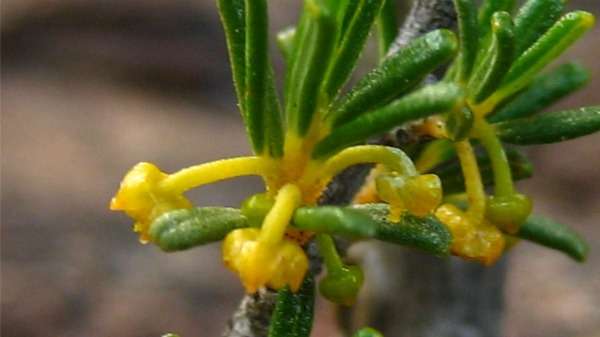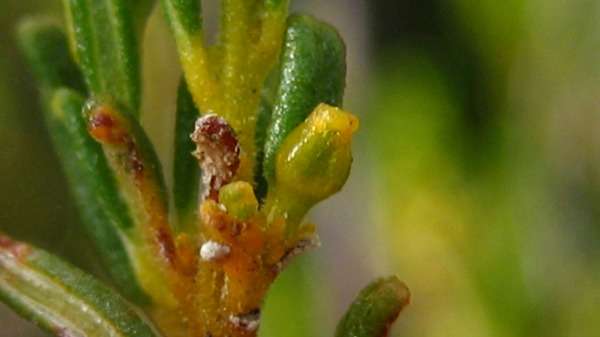Scientific spotlight identifies threat to unique shrubs

The first comprehensive study of two shrub species from the Euphorbiaceae family, which only occur near Ravensthorpe, suggests the plant's limited range may one day lead to its extinction if land clearing in the region continues.
Beyeria cockertonii and Beyeria villosa are species of conservation concern, with B. cockertonii listed as vulnerable to extinction.
While the species have estimated populations of upwards of 300,000 plants, they are only known to exist in the Ravensthorpe Range, seven hours south-east of Perth.
The study involving UWA PhD student Brian Vincent focused on a site at Bandalup Hill, which is rich in minerals and has been impacted by nickel mining operations.
Within this particular region is B. cockertonii, which is confined to 23 hectares—equivalent to a dozen WACA arenas.
Clearing is increasingly fragmenting B. cockertonii's constrained habitat, lead author and Department of Parks and Wildlife ecologist Dr Sarah Barrett says.
"Growing in small pockets of a landscape that is being progressively cleared renders it vulnerable to threats," she says.
"The smaller you get, the more edge effects around the perimeter of these pockets, so they are vulnerable to drying, weeds and disease.
"How these little pockets will survive into the future is unclear."
The area's unique geology is thought to contribute to the species' limited range, Dr Barrett says.

"Their habitat is quite rare," she says.
"The geology is derived from ultra-mafic volcanic rock, associated with the Greenstone belt, that is very rich in minerals."
Another risk to B. cockeronii's survival is its apparent dependence on a specific pollinator from the Miridae insect family, Dr Barrett says.
"If anything happens to that pollinator the reproduction of the species would be affected," she says.
The study also found ants may assist B. cockertonii's and B. villosa's reproduction and resilience.
During the study the researchers observed ants from the Formicidae family dispersing seeds from both species over short distances.
"The ants move the seed around… which may help disperse the seed into niches where they germinate better," she says.
Dr Barrett says both species require more research for their conservation.
"At this point in time, they are relatively stable and seem to be holding their own, but need monitoring into the future," she says.
Provided by Science Network WA
This article first appeared on ScienceNetwork Western Australia a science news website based at Scitech.



















